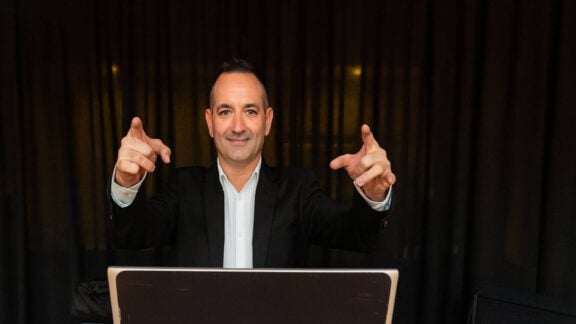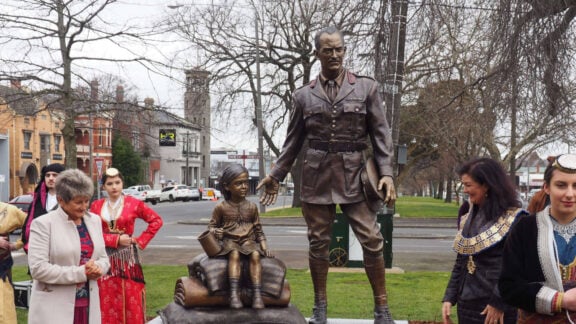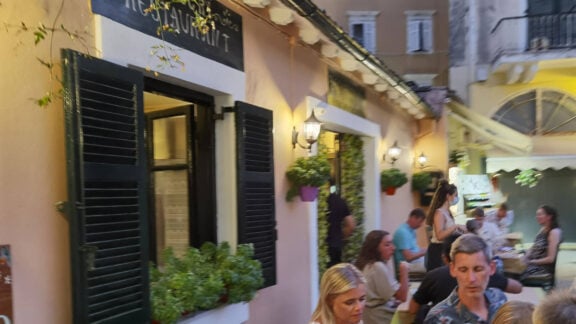While walking down the street one day, camera in hand, photographer Yanni Florence observed a man waiting at the traffic lights to cross the street.
For a moment, to the artist’s eye, he looked as though he were on fire – or more accurately, self-combusting – yet it quickly dissipated and became apparent he was simply smoking a cigarette.
This small moment in time, however, would feed the inspiration for Immolation, Florence’s fifth published book of photography.
“After taking some more photos of the smoke coming from people’s cigarettes I started to see if there was any pattern in them that could be read as smoke signals, and if those smoke signals could be deciphered,” Florence tell Neos Kosmos.
Using a Nikon 7000, he ventured across Melbourne taking photos of people in the streets, looking for patterns in their ‘signals’.
“I took hundreds, maybe a thousand of these photographs over about one year. I don’t know any of the people in the photographs. Some didn’t know I was taking their photograph, and others would acknowledge it with a look and sometimes a conspiratorial smile as if to say ‘I know what you are doing’,” he tells.
Of the thousands of photos he took, only 19 carefully selected images appear in the book, a challenging process Florence likens to “summing up a very long book in one short paragraph”.
For the creative, photography is a practice that holds a special place and something he has engaged in almost his entire life, seen in his first book of images entitled Self-Concious, published in 2009, comprising a selection of photographs Florence took from the age of 11 through to 18.
All black and white, and mainly of friends and family, there are examples of street photography, which he reasons could be seen as a precursor to the street photography in Immolation, and his other books Southland, Animal Life and Street Porn.
For Florence, his best work is created freely, without plans of a preconceived project; something that comes together naturally when he steps out on the street and starts snapping away.
“Over time I think about the photographs and try and work out what they are about and that becomes the project. The photographs come first and then the project,” he explains.
With a deep appreciation for his art, which spans more than 35 years, he is also a collector of the format – and not just by professional photographers.
Rather, he highly regards what is often referred to as ‘vernacular photography’ – images shot by everyday people, which is where his aesthetic of black and white and faded colouring stems.
“While I don’t try and copy or replicate them aesthetically, I am after the same awkwardness and strangeness some of these photographs have,” he shares.
The launch of Immolation, which took place earlier this month, was fronted by photographer Graeme Hare as part of the NGV book fair.
Preferring to keep a lower profile, the thought of an official launch initially wasn’t appealing for the artist; however, publisher Helen Frajman of M.33 worked her magic in making the night a great success.
“At first I was a bit reluctant, thinking it would be a bit embarrassing and all too much trouble, but I did it as it was quite fun,” he says.
The photographer goes one step further by coupling his art of photography with his skill and appreciation of book design. For the artist, the rise and expansion of the internet has highlighted the true value and appeal of books, their physical and material nature captivating in contrast to the digital output of technology.
Working with other artists, in addition to his own projects, he is involved in each project from start to finish, embracing the exterior of the book as equally a part of the work held within its pages.
“Like many other book designers I’m fully absorbed in the choice of paper, printing techniques and binding,” he says.
“For me, designing the sequence of images and working to balance text and images is what I find most interesting.”
Following the great response, Melbourne-based art and photography book distributor Perimeter has announced it will be taking Immolation to Offprint London, a book fair being held at the prestigious Tate Modern.
“Hopefully they find a good home in someone’s library in the UK,” he says.
Currently the photographer is working on a collaboration entitled Darkness Visible, a book of photographs based on the life of the late Melbourne mystic, Barrington Vincent Sherman; in addition to a new series of his own collection of images. Hair in the City comprises a host of images surrounding the relationship between sunlight and hair, which features namely odd and outrageous hairstyles worn by people throughout the city of Melbourne.
“I have also taken about 1,500 photographs of men with walking sticks. Not sure what will become of that,” he confides.
And that’s the true beauty of Florence’s work – he has a knack for noticing and sharing the meaning and patterns that he finds in what others dismiss as the mundanity of everyday city living.
For more information on Yanni Florence and his work, visit www.yanniflorence.net/









